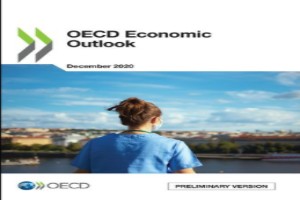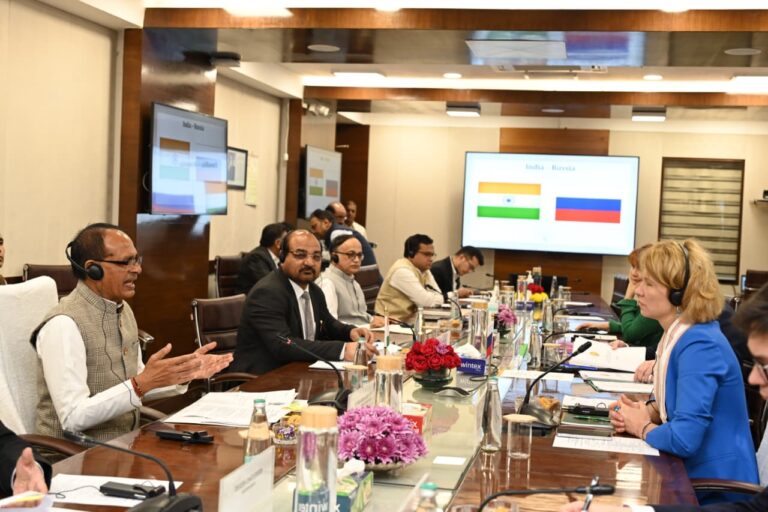
Paris: After the world GDP fell sharply by4.2% this year, it is projected to rise by 4.2% in 2021 with China accounting for over a third of that growth, according to the latest (Organisation for Economic Co-operation and Development) OECD Economic Outlook, released on December 1, 2020.
The projections are based on the prospects of a number of COVID-19 vaccines becoming widely available next year. while the recovery will be uneven across countries and sectors and could lead to lasting changes in the world economy, in case of India, the after a slump of -9.9%, the real GDP of the country will rise by 7.9% in 2021 and 4.8% in 2020.

While the pandemic has worsened inequality, hitting the most vulnerable in society the hardest, the report projected the bounce-back to be strongest in the Asian countries that have brought the virus under control. “But even by the end of 2021, many economies will have shrunk from 2019 levels before the pandemic,” the report said.
According to the report the global economy was expected to gain momentum only gradually, “as vaccines are deployed throughout OECD countries in the course of 2021”. “For momentum of economic recovery to pick up, policymakers will need to retain both public health and fiscal support while acting decisively on the lessons learnt,” it stated.
“Corporate debt is reaching levels last seen in the global financial crisis a decade ago, raising the risk of insolvencies but also cutting firms’ capacity to invest, which would weaken a broader economic recovery…Activity will continue to be restricted with social distancing and partly-closed borders most likely remaining through the first half of 2021,” the Economic Outlook said. It added that countries with effective testing, tracking and isolation programmes and where effective vaccinations can be distributed rapidly would perform relatively well, “but a high degree of uncertainty persists”.
It pointed out at the high levels of unemployment, particularly among the low-skilled and young, risk persisting for years. “Many children, especially those from disadvantaged backgrounds, have fallen badly behind in their education during lockdowns, further limiting their opportunities in the future,” it said. Moreover, for millions of small and medium-sized businesses – the main drivers of job creation – mounting debts and continued uncertainty were putting their survival in jeopardy. The report said declines in firms’ profits will hit their ability to service debts in the future and undermine their capacity to invest. Young and small as well as less productive companies are expected to be badly affected, in addition to those in the accommodation and food, transport, and arts and entertainment sectors that are severely affected by the lockdown measures.
GDP Projections
Real GDP Growth
%, year-on-year

INDIAN ECONOMY
The report said that after experiencing one of the world’s tightest lockdowns and recording the deepest GDP contraction among G20 economies in the second quarter of 2020, the Indian economy was recovering, “albeit with some hesitancy”.
While agriculture has benefited from favourable weather conditions, manufacturing and services are penalised by remaining containment measures and uncertainty. Significant social hardship persists and the fall in the unemployment rate must be seen against the background of declining labour force participation.
Supply chain disruptions have pushed inflation above the target range of the central bank. GDP is set to shrink by 10% in fiscal year (FY) 2020-21, with household consumption sluggish and investment largely unresponsive to easier monetary conditions. Despite a projected rebound of around 8% and 5% in FY 2021-22 and FY 2022-23, respectively, due to base effects and returning confidence, the GDP loss will be substantial.
COVID-19 is exacerbating pre-existing vulnerabilities related to poverty, high informality, environmental degradation and lack of employment opportunities. “To increase resilience, the government has responded with three stimulus packages, but additional fiscal measures are needed to mitigate the damage, together with a credible medium-term consolidation plan. The reform effort has continued, notably in the areas of agriculture and employment. However, poor performance of public banks, a pervasive regulatory burden, and understaffing of the judiciary hinder the proper allocation of resources needed for inclusive growth,” the report stated.
– globalbihari bureau





